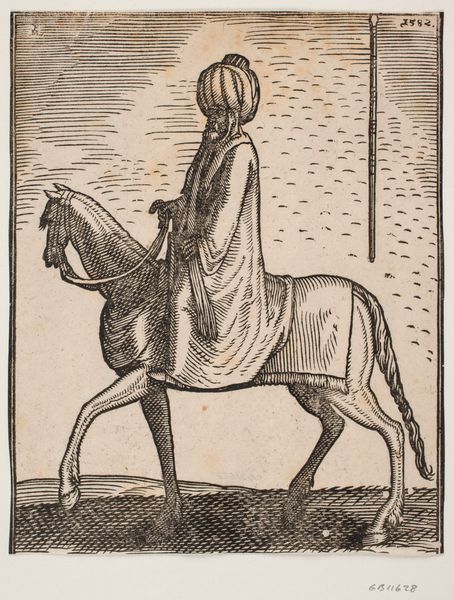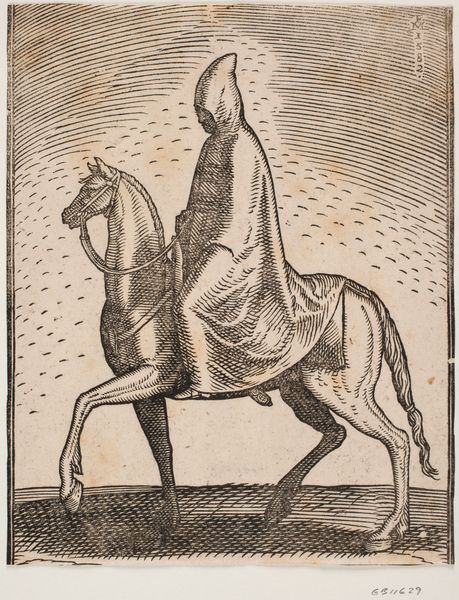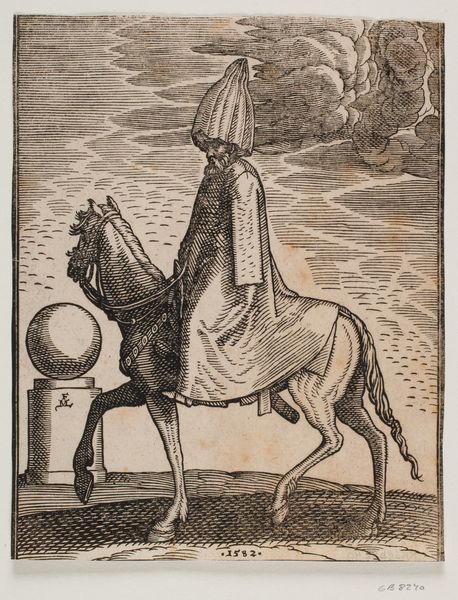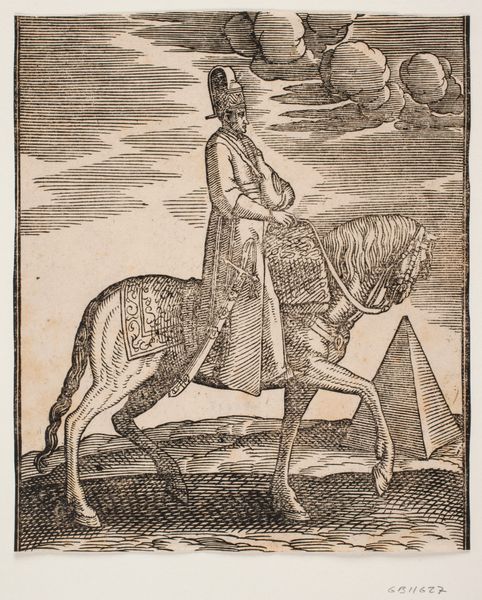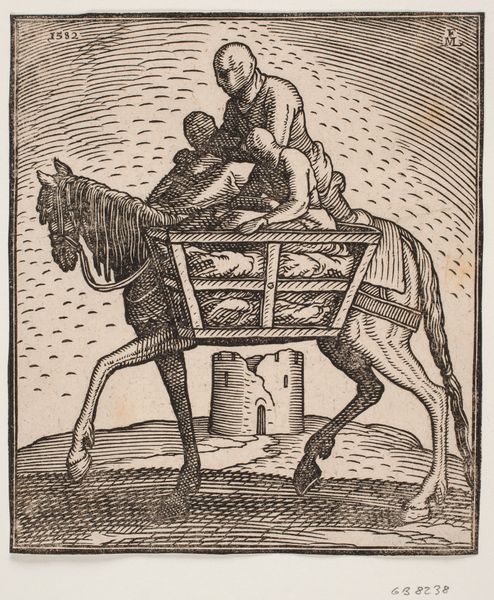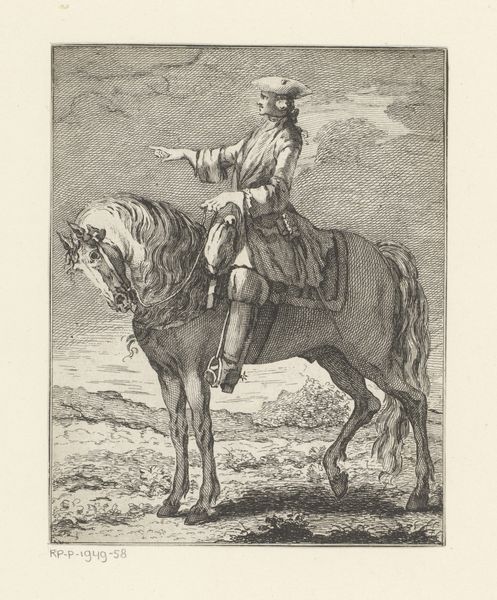
Unarmed turban-clad rider, profile towards the left; in front of the horse, an obelisk in ruins 1582
0:00
0:00
drawing, print, ink, woodcut
#
portrait
#
drawing
#
ink drawing
# print
#
landscape
#
figuration
#
11_renaissance
#
ink
#
woodcut
#
orientalism
#
history-painting
Dimensions: 209 mm (height) x 169 mm (width) (bladmaal)
Melchior Lorck etched this image of a turban-clad rider, sometime in the 16th century. The rider's turban, a symbol of dignity and status in Ottoman culture, immediately identifies him. In the West, such attire was often seen with a mix of fascination and apprehension. Note the broken obelisk before the horse, a classical symbol of fallen empires and vanitas. This juxtaposition is telling. We see echoes of this motif in Renaissance paintings, where ruins signify the transient nature of earthly power. Consider how such imagery recurs throughout history, from ancient Roman depictions of conquered lands to contemporary art reflecting on colonialism. The image taps into a deep vein of cultural memory, reflecting Europe's complex relationship with the Ottoman world—a blend of respect, fear, and the ever-present awareness of empires rising and falling. It reminds us that symbols carry emotional weight, engaging viewers on a subconscious level.
Comments
No comments
Be the first to comment and join the conversation on the ultimate creative platform.
